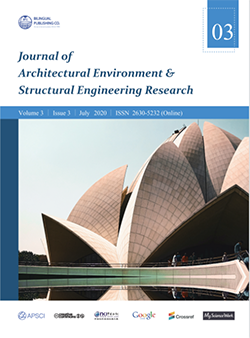-
2124
-
1857
-
1631
-
1560
-
1525
Effectiveness of Urban Farming Program in Providing Multiple Benefits to the Urban Community in Malaysia
DOI:
https://doi.org/10.30564/jaeser.v3i3.2138Abstract
Residents have chosen to be living in urban regions in recent years largely due to the accessibility of job opportunities and public services. These led to a fast increase in the amount of people live in urban regions and cities. As a result, a large amount of the property used for agricultural activities was transformed into factories, housing units, and highways. This also resulted in a decrease in food production, growth in food prices and food import bills as the country now relies on food imports especially rice, fruits and vegetables, that can prevent the fostering of urban farming activities and then provide beneficial information essential to form it into a more consumer friendly program. Moreover, studies on urban farming are somewhat few in Malaysia and this study can become helpful for future research. The study focused on small-scale agriculture projects, such as community gardens, and community-level programs such as community supported agriculture and farmers markets. The study found that how urban agriculture enhances community resilience and wellbeing. This is the necessity for the Malaysian urban authorities to give more appropriate identification and support to city dwellers and promote them to develop the practice of urban farming.
Keywords:
Urban farming, Benefit, Urban communityReferences
[1] Hagey, P. Community sustainability-building healthy soils-urban farming grows in oakland-Making soils productive via organics recycling is a cornerstone of meeting this California city's goal to get 30 percent of its food from within the immediate region. BioCycle-Journal of Composting and Recycling, 2012,53(3): 23.
[2] Golden, S. Impacts of urban agriculture: social,health, and economic: A literature review. Univ.California - Davis, 2013. http://asi.ucdavis.edu/resources/publications/UA%20Lit%20Review-%20Golden%20Reduced%2011-15.pdf
[3] Hendrickson, M. K., Porth, M. Urban agriculture—best practices and possibilities. University of Missouri, 2012: 1-52.
[4] Bailkey, M., Nasr, J. De Brownfields a Greenfields:Producir el alimento en ciudades norteamericanas. Noticias de la seguridad del alimento de la comunidad, 2000.
[5] Pearson, C. (Ed.). Urban agriculture: diverse activities and benefits for city society. Routledge, 2011.
[6] Smit, J., Nasr, J. Urban agriculture for sustainable cities: using wastes and idle land and water bodies as resources. Environment and urbanization, 1992, 4(2):141-152.
[7] Vaage, A. Understanding competing motivations for urban agriculture: an analysis of U.S. municipal ordinance adoption, Iowa State University Capstones,Theses and Dissertations, 2015.
[8] Butler, L. M., Maronek, D.M., Bills, N., Davis, T.D.,Freegood, J., Howell, F.M. Thompson, P.B. Urban and agricultural communities: Opportunities for common ground. Council for Agricultural Science and Technology, 138. Cantor, S.L. 2008. Green roofs in sustainable landscape design, New York: W.W. Norton & Co, 2002.
[9] Heynen, N., McCarthy, J., Prudham, S., Robbins, P.(Eds.). Neoliberal environments: false promises and unnatural consequences. Routledge, 2007.
[10] Martellozzo, F., Landry, J. S., Plouffe, D., Seufert,V., Rowhani, P., Ramankutty, N. Urban agriculture: a global analysis of the space constraint to meet urban vegetable demand. Environmental Research Letters, 2014, 9(6): 064025.
[11] Brown, K. H., Jameton, A. L. Public health implications of urban agriculture. Journal of public health policy, 2000, 21(1): 20-39.
[12] Melberg, K. Farming, stress and psychological well-being: the case of Norwegian farm spouses. Sociologia Ruralis, 2003, 43(1): 56-76.
[13] Poulsen, M. N., Neff, R. A., Winch, P. J. The multifunctionality of urban farming: perceived benefits for neighbourhood improvement. Local Environment, 2017, 22(11): 1411-1427.
[14] Ajzen, I. Nature and operation of attitudes. Annual review of psychology, 2001, 52(1): 27-58.
[15] Weiss, G., Goodnough, L. T. Anemia of chronic disease. New England Journal of Medicine, 2005,352(10): 1011-1023.
[16] Herren, T. H. O. M. A. S., Bartsch, P. E. T. E. R.,Haeberli, A., Straub, P. W. Increased thrombin-antithrombin III complexes after 1 h of physical exercise. Journal of Applied Physiology, 1992, 73(6):2499-2504.
[17] Vermeir, I., Verbeke, W. Sustainable food consumption among young adults in Belgium: Theory of planned behaviour and the role of confidence and values. Ecological economics, 2008, 64(3): 542-553.
[18] Sparks, P., Guthrie, C. A., Shepherd, R. The dimensional structure of the perceived behavioral control construct 1. Journal of applied social psychology, 1997, 27(5): 418-438.
[19] Warren, E., Hawkesworth, S., Knai, C. Investigating the association between urban agriculture and food security, dietary diversity, and nutritional status: A systematic literature review. Food Policy, 2015, 53:54-66.
[20] Ngahdiman, i. n. b. Intention to practice agriculture among urban dwellers in the Klang valley Malaysia.Thesis, 2017
[21] Voicu, I., Been, V. The effect of community gardens on neighboring property values. Real Estate Economics, 2008, 36(2): 241-283.
[22] Pfeiffer, A., Silva, E., Colquhoun, J. Innovation in urban agricultural practices: Responding to diverse production environments. Renewable Agriculture and Food Systems, 2015, 30(1): 79.
[23] Pölling, B. Comparison of Farm Structures, Success Factors, Obstacles, Clients’ Expectations and Policy Wishes of Urban Farming’s Main Business Models in North Rhine-Westphalia, Germany. Sustainability, 2016, 8(5): 446.
[24] Mougeot, L. J. Urban agriculture: definition, presence, potentials and risks. Growing cities, growing food: Urban agriculture on the policy agenda, 2000, 1:42.
[25] Menezes, E., Maia, A. G., de Carvalho, C. S. Effectiveness of low-carbon development strategies:Evaluation of policy scenarios for the urban transport sector in a Brazilian megacity. Technological Forecasting and Social Change, 2017, 114: 226-241.
[26] Lu, C., Grundy, S., Jiang, N. Uncovering LED light effects on plant growth: new angles and perspectives,2017.
[27] Suparwoko, and Betri Taufani. Urban Farming Construction Model on the Vertical Building Envelope to Support the Green Buildings Development in Sleman, Indonesia. Procedia Engineering, 2017, 171:258-64
Downloads
How to Cite
Issue
Article Type
License
Copyright © 2020 Nazanin Nafisi, Osman Mohd Tahir, Sara Nafisi, Nazri Ishak

This is an open access article under the Creative Commons Attribution-NonCommercial 4.0 International (CC BY-NC 4.0) License.




 Nazanin Nafisi
Nazanin Nafisi





